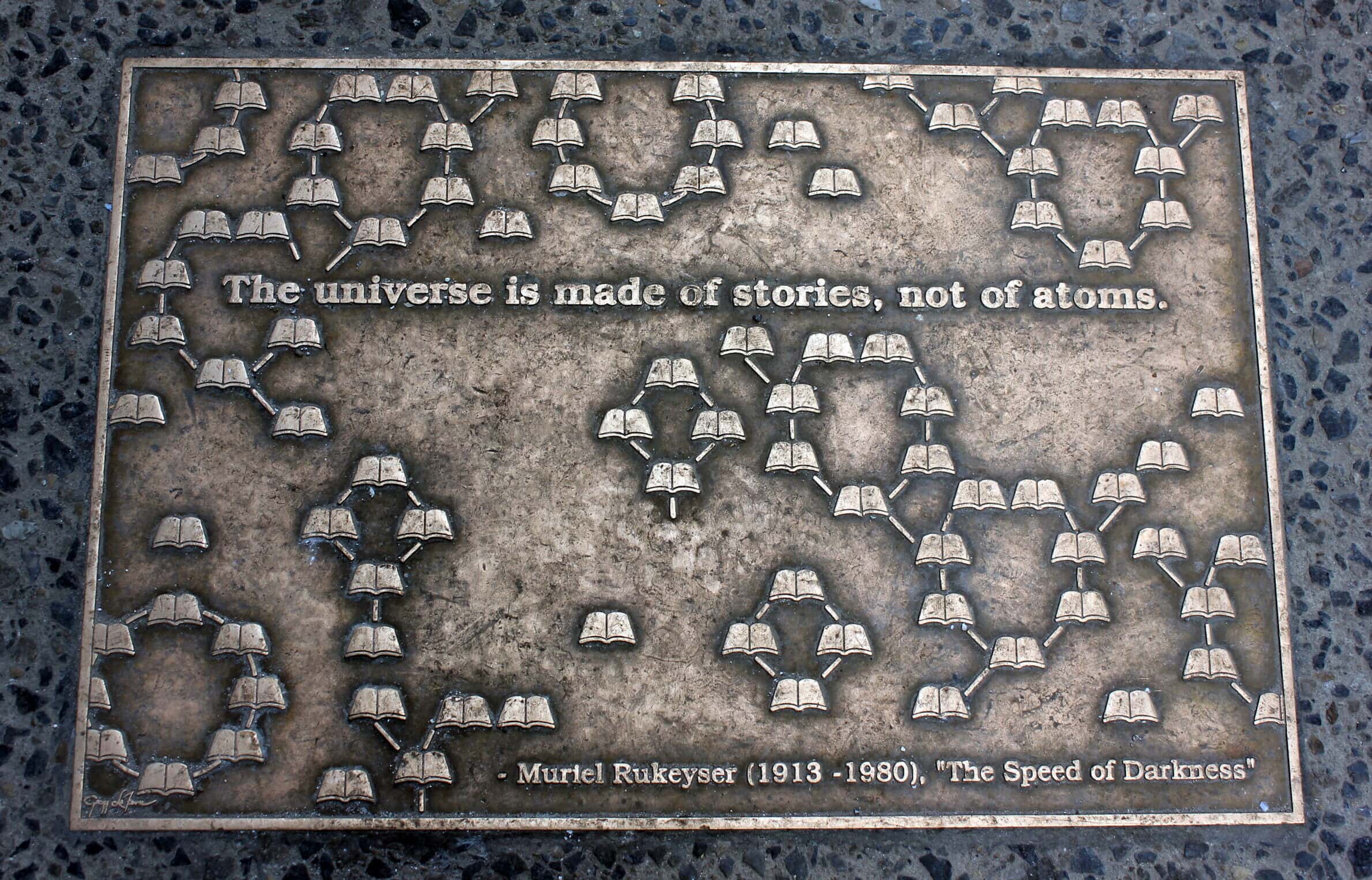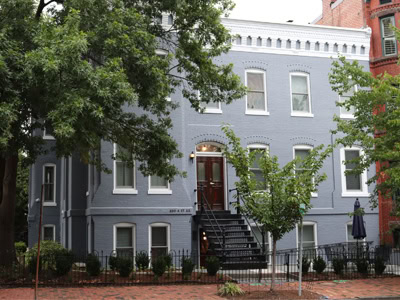For 75 years the area now known as the “Sweet Auburn” National Historic Landmark District was one of the most prosperous concentrations of African American businesses in the nation. Auburn Avenue runs east from downtown Atlanta’s Five Points Intersection. Its commercial success and the political influence of Auburn Avenue’s leaders saved the community from urban renewal’s destruction. Those who tour Auburn Avenue when they come to Atlanta in January will want to progress from the recently designed Herndon Plaza and Atlanta’s newest public research library at its west end, back to the turn-of-the-century junction of Auburn Avenue and Old Wheat Street. The following paragraphs describe some of the places of interest on the avenue.
Alonzo Herndon created the Atlanta Life insurance Company in 1905. His original Herndon Building complements Herndon Plaza today. Nearby is the Auburn Avenue Research library of African American Culture and History. The Student Nonviolent Coordinating Committee (SNCC) opened its first office in Atlanta at 135 Auburn; the African-American Panoramic Experience (APEX) Museum now sits on the site. Just steps away,the Scott family publishes the Atlanta Daily World newspaper, an integral part of black Atlanta. The National Association for the Advancement of Colored People (NAACP) directed voter registration and desegregation campaigns from its early office at 204 Auburn. Across the street, the Mutual Federal Savings and Loan served as headquarters for the Citizens Student Defense Fund, which raised funds for the Atlanta University students who protested segregation in the early 1960s.
Ruby Blackburn ran the Georgia League of Women Voters from an office at 219 Auburn, above Bronner Brothers hair products, a primary promoter of blacks in city politics. In 1935 Blackburn, Selena Butler—also founder of the first Parent-Teacher Association for African Americans—and Martin Luther King, Sr., organized the earliest successful voter registration campaign, originating on Auburn Avenue.
Auburn Avenue’s churches were at the center of Atlanta’s political upheavals. Big Bethel Church at 220 Auburn hosted President William Howard Taft in 1911 and was the place where John Wesley Dobbs founded the Atlanta Civil and Political League (ACPL) in 1936. The ACPL and its successors organized voter registration and bloc voting so well that 25 years later, almost every white office seeker in town requested the opportunity to speak at Big Bethel.
A.T. Walden, whose first law office was at 239 Auburn, petitioned for equity in teachers’ salaries, fought white supremacist groups, and cofounded the Atlanta Negro Voters League. He and Don Hollowell managed the legal end of the cafeteria integration movement. He became Atlanta’s first African American municipal judge in 1964. Auburn Avenue’s business leaders showed an equal commitment to equality. The Cox Brothers and Haugabrooks funeral homes, neighbors at 378 and 364 Auburn, respectively, consistently supported equality movements. The Oddfellows Building, 250 Auburn, served as headquarters for Benjamin Davis, Sr.’s the Atlanta Independent. The popular Sutton’s restaurant at 312 Auburn served as the unofficial headquarters for voter drives in the 1930s and hosted ACPL’s first annual Lincoln-Douglass Day Dinner.
The Wheat Street Baptist Church at 359 Auburn and its pastor, Rev. William Holmes Borders, were integral components of civil and political rights movements. From the late 1930s to the 1950s, Wheat Street hosted rallies. In 1946 Borders headed the Public Defenders Project, raising $10,000 for an antilynching campaign. Sixties activists relied upon the two for intervention with authorities, demonstrations, and mass support meetings.
Martin Luther King, Jr., brought the Southern Christian Leadership Conference (SCLC) to 334 Auburn, now designated as part of the Martin Luther King, Jr., National Historic Site. Ebenezer Baptist Church at 407 Auburn came to King through his father and grandfather. Martin Luther King, Sr., was especially active in promoting voter registration, improving teacher salaries, and hiring African American police officers, while copastor King, Jr., won the 1964 Nobel Peace Prize and led innumerable civil rights battles and the SCLC. The Martin Luther King, Jr., Center for Nonviolent Social Change at 449 Auburn seeks to maintain his work.
East of the center to Old Wheat Street is an African American residential neighborhood preserved as it was nearly 100 years ago. Among these houses are King’s childhood home at 501 Auburn and the home of C. L. Harper, noted educator and voting rights activist, at 535 Auburn.
Auburn Avenue served as a nerve center for the civil rights movement of the sixties and seventies. Thanks in no small part to the decades-long political involvement of the Auburn Avenue community, African Americans won municipal and state elections. The culmination of voter registration in Atlanta can be seen in a generational change in Auburn Avenue. John Wesley Dobbs, known in the 1950s as “the Mayor of Auburn Avenue” and Ihence the unelected leader of black Atlanta, was superseded in 1974 by his grandson, Maynard Jackson, who was elected the mayor of all of the city.
Jacqueline A. Rouse is associate professor of history at Georgia State University. Chris Lutz is a graduate teaching assistant in the history department at Georgia State.


